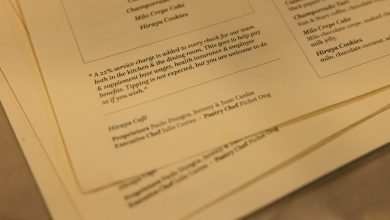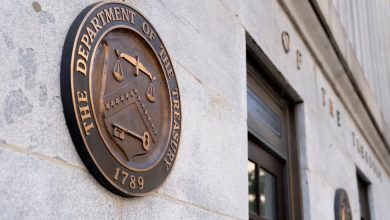Judge Strikes Down Elite Virginia High School’s Admissions Rules

A federal judge on Friday struck down changes that had been made to the admissions process at a magnet school in Virginia that is one of the most prestigious high schools in the country, saying that the new rules left Asian American students “disproportionately deprived of a level playing field.”
The school, Thomas Jefferson High School for Science and Technology, known as T.J., which sits just outside of Washington, D.C., in Fairfax County, Va., had adopted the admissions protocols in late 2020 with the aim of diversifying the student body. The new rules did not mention race but eliminated a standardized testing requirement and specifically guaranteed eligibility to top students at middle schools that had sent few students to T.J. in the past.
After the rules went into effect, the percentages of Black and Hispanic students in the incoming class more than tripled, while the number of Asian American students fell from 73 percent to 54 percent, the lowest share in years.
In changing the admissions process, school officials “expressed their desire to remake T.J. admissions because they were dissatisfied with the racial composition of the school,” Judge Claude M. Hilton of the U.S. District Court for the Eastern District of Virginia wrote in his decision.
“A means to accomplish their goal of achieving racial balance,” he wrote, “was to decrease enrollment of the only racial group ‘overrepresented’ at T.J. — Asian Americans. The board employed proxies that disproportionately burden Asian American students.”
The decision comes as elite high schools across the country are embarking on plans to diversify their enrollment by race and income but are meeting with fierce pushback from many parents, including many Asian Americans.
Justin Driver, a Yale law professor, said it was “difficult to overstate the significance” of Judge Hilton’s decision, calling it “the latest and boldest indication yet that conservatives wish once again to offer radical reinterpretations of the 14th Amendment’s Equal Protection Clause.”
Mr. Driver, an expert on Supreme Court decisions affecting education, said the admissions plan at Thomas Jefferson High School was “plainly consistent with binding Supreme Court precedent.” But he said the judge’s ruling “has its eyes not so much on the most pertinent judicial decisions as the transformed composition of the current Supreme Court.”
The plaintiff in the suit was an organization called Coalition for TJ, which includes some Asian American parents of prospective TJ applicants and was formed in August 2020 to oppose changes to the admissions process.
“We hope this ruling sends the message that government cannot choose who receives the opportunity to attend public schools based on race or ethnicity,” Erin Wilcox, a lawyer with the Pacific Legal Foundation, which represented the coalition, said in a statement. The foundation, a 49-year-old conservative legal group based in California, has also filed lawsuits in New York and Maryland.
Fairfax County Public Schools, the defendant in the case, said on Friday that it was considering an appeal. A lawyer for the school board, John Foster, said in a statement that the admissions process that was struck down “is blind to race, gender and national origin and gives the most talented students from every middle school a seat at T.J.” He added that it “meets all legal requirements.”
The debate over race and diversity in T.J.’s classes goes back decades. Changes have been made to the admissions process repeatedly to bring in more Black and Hispanic students, who make up a much larger share of the students in Fairfax public schools than they do of the students at T.J. Yet the disparity had never gone away.
In May 2020, the Virginia legislature enacted a requirement that the state’s regional magnet schools, called Governor’s Schools, set diversity goals and submit status reports to the governor in the fall.
Jeremy Shughart, the high school’s director of admissions, presented a white paper to the school board, outlining some alternative approaches to admissions that might, as he said in an email at the time, “level the playing field for historically underrepresented groups,” including racial minorities but also students from poor households and English language learners.
In June, the statistics about the incoming class became public, and the percentage of Black students admitted was so low that the school’s official breakdown of class demographics reported it as only a series of asterisks. This came as protests were taking place nationwide over the murder of George Floyd, and demands for racial justice were growing louder.
In an email to the T.J. community, the school principal, Ann Bonitatibus, wrote that “we each have a responsibility to our community to speak up and take actions that counter racism,” adding that the T.J. community did “not reflect the racial composition” in Fairfax County’s public schools.
Over the next few months, the Fairfax County School Board considered a variety of changes to the admissions process in a series of meetings that the Coalition for TJ said were rushed and lacked transparency — an argument the judge ultimately agreed with. In October, the board voted to do away with the standardized testing requirement, immediately drawing the objections of parents, many of whom had paid significant sums for test preparation courses, and alumni who thought this would weaken the school’s reputation as a rigorous academic powerhouse.
In December, the board approved the new admissions process, which in addition to guaranteeing eligibility to students at every middle school in the school system, added four “experience factors,” such as whether students were economically disadvantaged or in the process of learning English.
The school argued in court that the factors it was intent on addressing included many things other than race — following the changes, for example, the percentage of economically disadvantaged students grew from less than 1 percent to over a quarter of the incoming class. But Judge Hilton, who was appointed by President Ronald Reagan, was not convinced, arguing that internal emails and messages, as well as the racial data that board members consulted, “make clear that diversity primarily meant racial diversity.”
The school board could have achieved that by other measures, such as expanding the size of T.J.’s student body or offering free test prep courses, he wrote. But the policy the school devised “to increase Black and Hispanic enrollment,” he wrote, “would, by necessity, decrease the representation of Asian Americans.”
Julia McCaskill, who has three daughters in Fairfax County schools — two of them at T.J. — said parents gathered outside the school following Judge Hilton’s ruling, holding a small celebration despite the cold.
“We’re just very happy,” said Ms. McCaskill, who is Chinese American and had been involved in the litigation. “We feel that common sense prevailed because the school can deny it’s about race, but it sounds like it’s race.”





